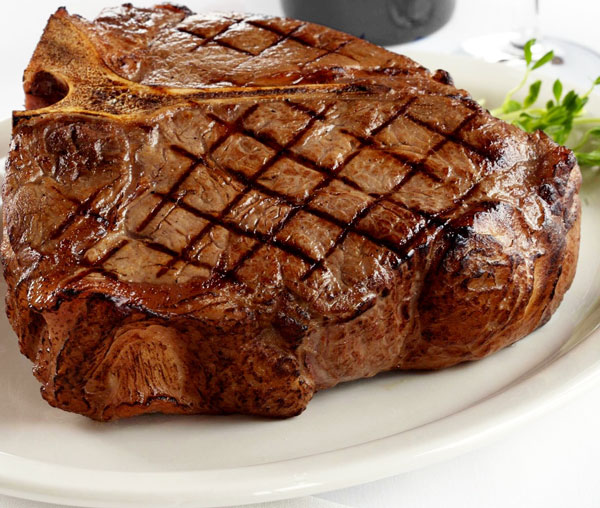For many, enjoying a prime cut of steak is the pinnacle of an elegant dining experience. Steak is a very versatile entrée and often pairs well with just about any side dish. While the cooking method and surface you use are very important, so too is the cut of meat you are working with/consuming. The Old Homestead Steakhouse, considered by many to be the best steakhouse in NYC, knows a thing or two about adhering to tradition, elegance, and class, when serving up the finest cuts of steak.
Having opened its doors to Manhattanites in 1868, you are guaranteed to always have a memorable experience when consuming the finest steak that Manhattan has to offer. Since our premiere steakhouse in Manhattan is diverse in its offerings, many consumers may not know how or where to start, and that’s okay! Allow us to impart some wisdom so that your dining experience is a joyous one. Here is how to pick a prime cut of steak for your next steakhouse visit to the best steakhouse in NYC at The Old Homestead Steakhouse.
Ordering By Cut
The first thing to consider when dining at the best steakhouse in NYC is the cut. Typically speaking, steakhouses will offer at least 3-4 different cuts of steak on their menus. This is where many customers can get lost as not many places will detail the features of the steaks and how they vary from cut to cut. You might see things like bone-in and boneless offerings, featuring cuts like Ribeye, Filet Mignon, or New York Strip. In the case of bone-in vs. boneless, flavor is a very important element to consider.
Bone-in steaks usually have more flavor than boneless because a lot of the flavor comes from the bone’s marrow, which can also tenderize the meat and give it a juicier texture that many of us prefer. On the other hand, boneless could be a viable choice for someone that doesn’t want to deal with the hassle of cutting around a bone.
Now, closely examine the type of cut itself. To get the most out of your steak-eating experience, you will want meat that is full of flavor and texture. To meet both of these requirements, we strongly recommend choosing Porterhouse, Ribeye, or New York Strip. Filet Mignon is also another exquisite option if you are looking for something a little more sophisticated, but if you want a meatier flavor, the other cuts we mentioned are your best bet!
Does The Size Of The Steak Matter?
We aren’t kidding when we say that steak is diverse in its offerings. Size is another important factor to pay attention to when deciding on which cut to consume. Many steaks are between 3-14 ounces, sometimes more. At The Old Homestead Steakhouse, our servings cater to loyal customers with prodigious appetites. You will never have to worry about leaving hungry when having a meal at the best steakhouse in NYC. We are a firm believer in the philosophy of “go big or go home”. You can see check for yourself by glancing at our menu here.
Choosing Age Over Beauty
When looking at the menu, do you see anything on the steak’s description that sticks out? If you noticed the touch of elegance from the mention of dry-aged or wet aged, then bravo, your keen attention to detail could make the difference between a good steak experience and an amazing steak experience. Aging is the process of hanging meat to dry before it’s cooked to tenderize it and seal in the flavor. With wet aging, the meat will be vacuum-sealed, locking in the moisture and keeping its weight intact.
For dry-aging, the beef will be sprung up in an open-air facility, which partially dehydrates it but also traps in the natural moisture, further contributing to its tenderness and flavor profile. Dry meat is cut off from the outside so that it can shed some of its weight. Dry-aged beef tends to have the best, most natural flavor whereas with wet-aged beef, it can pick up the flavor of its wrapping. Regardless, aged beef is highly coveted by most as opposed to non-aged beef.
The Perfect Temperature
Your wait person will always ask you how you want your steak cooked. There is no right or wrong answer here, it’s simply a matter of personal preference. A good majority of restaurant-goers may base their decision on how others in their inner circle order steak. Regardless of your methodology, you should be aware of the basics of the different cooking temperatures when visiting our premiere steakhouse in Manhattan. The skill of the chef is important.
One chef can cook a medium-rare steak completely different from another chef. One thing you will never have to worry about when visiting The Old Homestead Steakhouse is consistency. Our team of culinary professionals will always go above and beyond to ensure that your steak is customized to your heart’s content. Having said all that, it may still beckon the question– what is a good temperature? Generally, medium rare is always a safe bet. Why? Because it’s a surefire guarantee that the chef won’t overcook the steak. If it’s too rare, it can always go back in the pan for another minute or so.
A Pillar Of Culinary Excellence: Best Steakhouse In NYC
Let The Old Homestead Steakhouse pick out the perfect steak for you, every single time you visit us! While we encourage you to keep the above-mentioned tips in mind, our staff will continually guide you on how to order, what to pair your food with, how it should be cooked, and much more. Ready to satiate your appetite for your next outing? Visit us today to experience the wonders of the best steakhouse in NYC.

